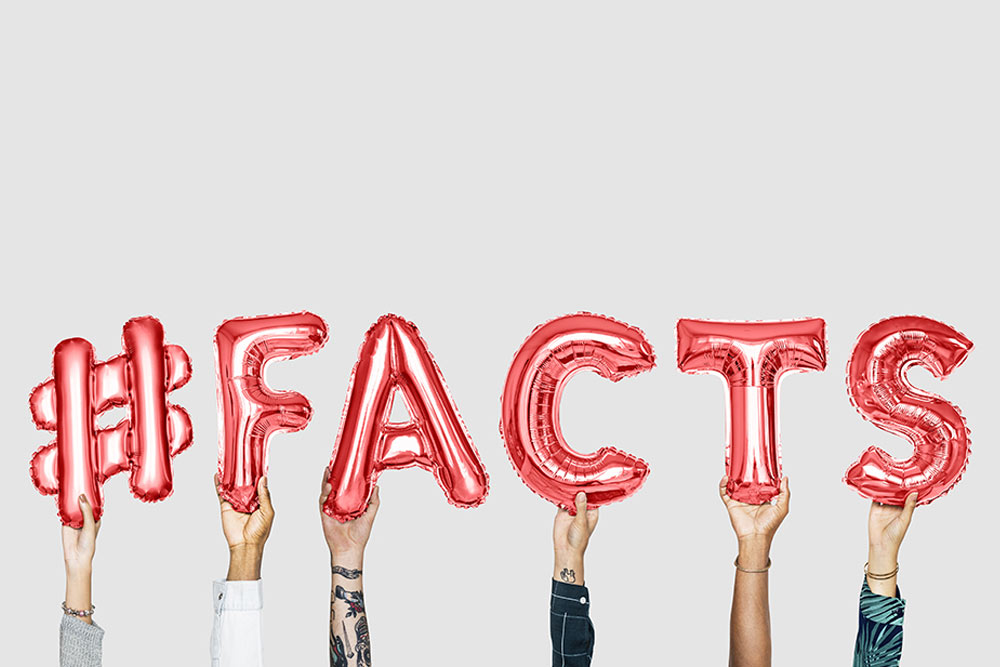Common Breastfeeding Myths Debunked

“Pump and dump,” diet restrictions, and more well-known “advice” that’s actually quite incorrect.
Expert: Danielle Downs, IBCLC
Expecting and new parents sometimes feel like magnets for unsolicited advice. A trip to the grocery store or a walk to the mailbox can turn into a lesson in feeding, diapering, or the all-sacred infant sleep schedule. Since every family has its own tips, tricks, and childrearing culture, new parents are often stuck between conventions and traditions. While all of this advice is typically well-meaning, it’s frequently conflicting, and more importantly, it isn’t always accurate.
I know all of this information can be confusing and overwhelming. As an international board-certified lactation consultant, I’m here to set the record straight and tell you the truth behind some of the common misconceptions about breastfeeding so you can go forth to nurse your baby confidently and successfully.
Diet Myths
Myth: Breastfeeding parents should steer clear of “gassy” foods like cabbage, beans, and broccoli to avoid giving the baby tummy trouble.
Where it comes from: Belief-based practices are often tested with confirmation bias. The only study ever conducted to confirm this statement was a retrospective diet diary study. In short, the researchers simply asked the participating parents to remember their diets and periods of fussiness. Unfortunately, participants tend to report a variety of foods cause colic symptoms based on their beliefs.
What science says: Crunchy veggies, beans, and legumes have high amounts of insoluble fiber, which interacts with bacteria in the adult gut and causes gas. Insoluble fiber does not leave the gastrointestinal (GI) tract or enter the bloodstream. Since human milk is made from the blood supply and not the GI contents, it is impossible for babies to get this gas-causing insoluble fiber from breast milk.
Myth: Lactating parents should eat a bland diet to protect their milk from intense flavors like garlic and spicy peppers.
Where it comes from: Refraining from spices tends to be a widely held belief across many cultures and is often found peppered throughout social media message boards on which nursing parents share stories and advice.
What science says: Spice and heat don’t transfer into the milk. Human milk is actually quite sweet. Many parents try a drop, wondering about the spicy food they have eaten, and are surprised to find no evidence of their fiery meal. A garlic study published in Pediatrics in 1991 showed that babies enjoy the subtle flavor changes of garlic and take in more milk. In fact, garlic supplements may be a viable option for moms of slow gainers and distracted nursers. The subtle flavor changes of the maternal diet are thought to prepare the nursling for solid foods typical of the family’s fare. The World Health Organization’s breastfeeding counselor training program instructs trainers to encourage nursing parents to choose the widest variety of foods possible, especially local and fresh foods.
Alcohol Myths
Myth: After drinking alcohol, a nursing parent should “pump and dump” breast milk to avoid feeding their baby milk contaminated with alcohol.
Where it comes from: Perhaps we are all just fans of clever, catchy rhymes. “Righty tighty, lefty loosey” is certainly accurate and helpful, after all.
What science says: Alcohol does transfer from a nursing parent’s blood supply into their milk, but it also leaves the milk at about the same rate as it leaves their blood supply. This means that the alcohol does not get “trapped” in the milk and that removing and discarding the milk is unnecessary. Jack Newman, MD, a Canadian pediatrician specializing in breastfeeding, is internationally known for his sensible and scientific approach. His handout “More Breastfeeding Myths” describes his medical opinion: “Reasonable alcohol intake should not be discouraged at all. As is the case with most drugs, little alcohol comes out in the milk. The [parent] can consume some alcohol and continue breastfeeding as [they] normally [do].” Prohibiting alcohol, he suggests, is an unnecessary restriction. In short, alcoholic or unsafe milk should not be a concern for parents who consume moderate amounts of alcohol.
Myth: Drinking a beer daily helps nursing parents produce enough milk.
Where it comes from: Fermented nutrition beers for pregnant and lactating parents are described throughout historical documents from ancient Egypt until more recently. Drinks called “small beers” were regularly recommended for women and children as well and had low alcohol content. These fermented drinks were low in foodborne illness (because of alcohol fermentation) and high in nutrients because of the grains they were made from. Brewing wines and beers have been of great cultural significance throughout written history.
What science says: Alcohol inhibits milk production. Alcohol may impact the flavor of human milk and cause babies to nurse less, leaving nursing parents with fuller breasts and thus believing they are making more milk. Alcohol also slows the milk ejection reflex. However, animal studies have shown that some compounds in certain grains may improve the blood level of prolactin, the hormone responsible for milk production. If these compounds have the same effect on human milk production, eating nutritiously prepared whole grains is probably ideal for meeting baby’s needs.
Illness and Medication Myths
Myth: Nursing parents who are sick should not breastfeed.
Where it comes from: Some illnesses pass to the infant through breast milk or close contact, such as holding a baby.
What science says: Most common illnesses like the flu virus, COVID-19, colds, food poisoning, and sinus infections are not transmitted through breast milk. Chances are, if the breastfeeding parent has a cold, the baby was exposed at about the same time. The parent’s milk will change daily to fight the new infection and protect the baby. Direct nursing at the breast is the best protection a parent can give their baby’s immune system.
Myth: Breastfeeding parents can’t take medicines because they will be dangerous to the baby or “dry up” milk supply.
Where it comes from: Until recently, drug studies for pregnant and lactating parents were limited. Erring on the side of caution is almost always the best medical advice.
What science says: It’s not uncommon for parents to need unexpected medical treatments while breastfeeding. Some of the more common surgeries breastfeeding parents have are C-sections and oral surgeries, and breastfeeding-friendly anesthesia and pain medications are available for both. In fact, most classes of medications have a breastfeeding-safe option. Pain medicines, anti-depressants, anesthesia, allergy medicine, antibiotics, and a variety of drugs for chronic conditions can usually be safely taken while breastfeeding.
Supplementation Myths
Myth: Human milk is deficient in iron, and all breastfed babies need an iron supplement to prevent anemia.
Where it comes from: Human milk contains lower iron levels than formula.
What science says: This myth actually has nothing to do with breastfeeding and is all about standard birth practices. Exclusive breastfeeding will provide all the nutrients your baby needs until they begin solids (at around 6 months of age). The type of iron in human milk is easily absorbed and highly bioavailable. Iron deficiency anemia seems more prevalent in exclusively breastfed babies, but new science about cord clamping is helping us understand why. Premature clamping of the umbilical cord is a risk factor for iron deficiency anemia in all babies, regardless of feeding method. A Swedish study on delayed cord clamping (a delay of only 180 seconds) was published in the 2011 British Medical Journal, concluding that “delayed cord clamping, compared with early clamping, resulted in improved iron status and reduced prevalence of iron deficiency at 4 months of age.” One of the best practices is to delay cord clamping until the cord naturally stops pulsating or the placenta is delivered, which allows baby to achieve biologically normal iron stores and blood volume to prevent anemia.
Myth: Babies need water on hot days.
Where it comes from: This is a commonly held belief in warm climates. Water is globally viewed as a “source of life.” The milk of domesticated animals like goats, sheep, and cows is thick with minerals and not very thirst-quenching. It’s not unreasonable to think human milk is like the other animal milk we have daily experience drinking.
What science says: Human milk is about 87% water. It’s composed of electrolytes, fats, and proteins to perfectly hydrate a baby. Contaminated water is a significant risk in developing nations, but even clean water should be avoided to prevent water intoxication in otherwise exclusively breastfed infants.
Physical Effects Myths
Myth: Breastfeeding at night is bad for teeth and can cause cavities.
Where it comes from: Poor oral hygiene is common in older babies and toddlers who fight the toothbrush, and the use of formula milk, dairy milk, juices, and teas in nighttime bottles is correlated with dental decay. Human milk is often assumed to behave like other foods and drinks.
What science says: Brian Palmer, DDS, a pioneer in the dental field, extensively researched the oral health of breastfed babies and children. In his article “Breastfeeding and Infant Caries: No Connection,” he cites multiple studies describing breastfeeding as the optimal feeding method for best oral health. Human milk is a living tissue and is protective of the growing teeth. Teeth that contain food particles are always at risk for decay, but clean teeth that have come in contact with human milk are not at risk. As long as your baby gets brushed after dinner, the teeth are safe overnight, regardless of how frequently your little one nurses after brushing. There is no need to wipe the mouth out after nursing.
Myth: Breastfeeding causes saggy breasts.
Where it comes from: Most birthing parents notice a change in their breasts during parenthood. It’s easy to blame breastfeeding since so many parents do nurse their babies for some amount of time.
What science says: Breast changes and breastfeeding are common experiences, but just because two things are common doesn’t mean they are correlated. Plastic surgeons have little stake in the breastfeeding industry and are certainly experts in culturally undesirable body changes. A 2008 study published in Aesthetic Surgery Journal has shown that breastfeeding does not cause sagging breasts (or breast ptosis as it’s medically termed). Weight gain in pregnancy, age, a higher number of pregnancies, and smoking are all cited as independent contributing factors to aesthetic changes in the breasts.
The Big Myth
Myth: “Breast is Best!”
Where it comes from: The belief that babies fed breast milk are healthier than babies fed formula.
What science says: Fed is best! A fed baby is the goal. Period.
The American Academy of Pediatrics (AAP) recommends parents exclusively breastfeed their baby until they reach 6 months of age and then continue to include breast milk in their baby’s diet until their 2nd birthday (or even longer). The AAP, along with other credible health organizations, recommends breastfeeding because there are a variety of benefits to breast milk that aren’t also associated with formula. However, breastfeeding doesn’t always come easy to birthing parents, and sometimes formula must be used to supplement an infant’s diet—or possibly wholly make up their diet. Today, baby formula closely mimics human breast milk. While it doesn’t provide all of the benefits of breast milk, it does come with a few of its own, like the ability to let multiple people feed your baby at any given time or the fact that it often satiates baby longer. Parents should not feel ashamed if they feed their baby formula. What is most important is that the baby is fed.
Being informed about infant feeding can help new parents feel comfortable with their choices, but it can’t stop some outsiders from offering their advice and opinions. If you’re feeling overwhelmed by the amount of advice you’ve been given, the best thing to do is to talk to your child’s pediatrician and contact a lactation consultant. Friends and family (and sometimes strangers) may mean well, but always put your trust in the experts when it comes to you and your baby.







